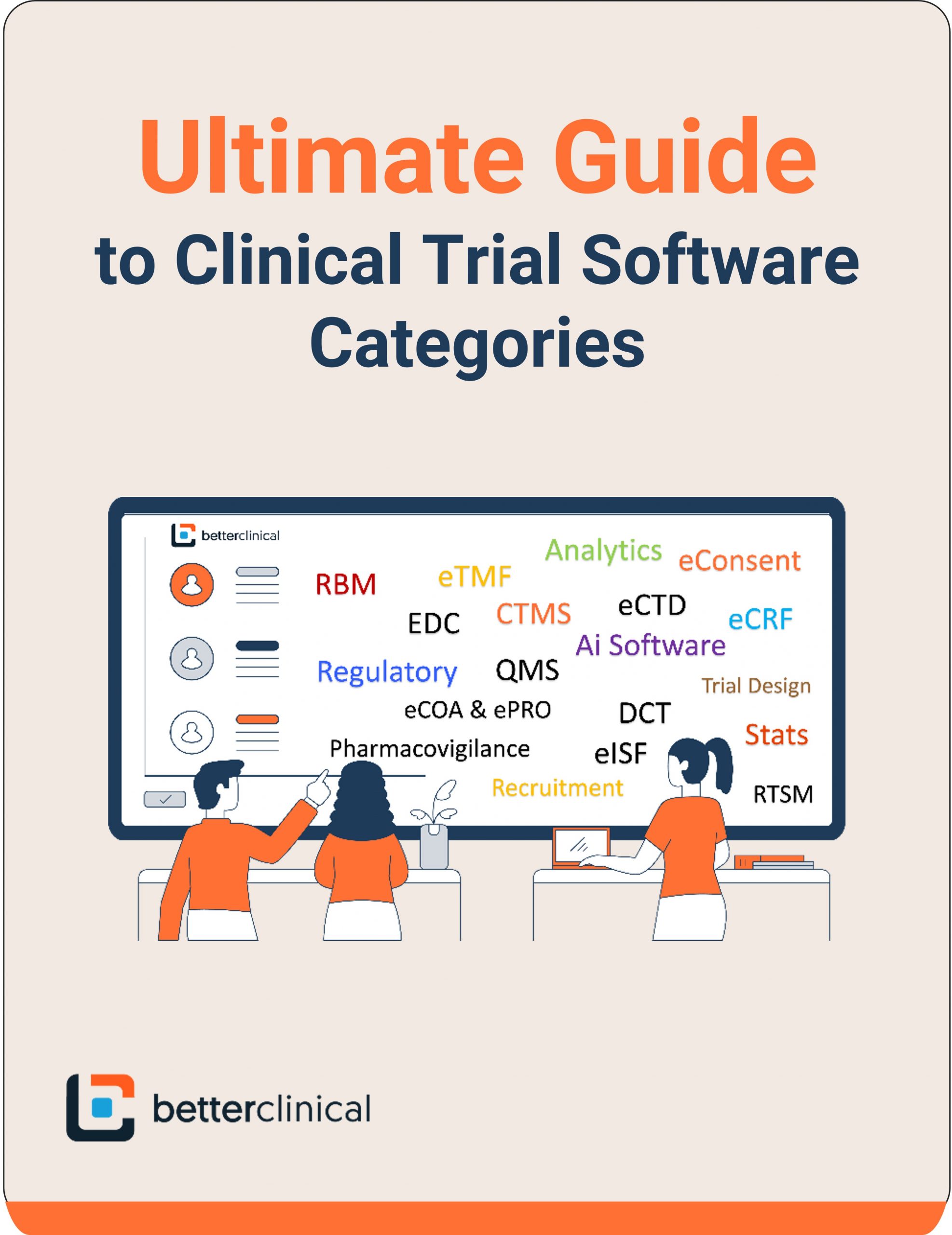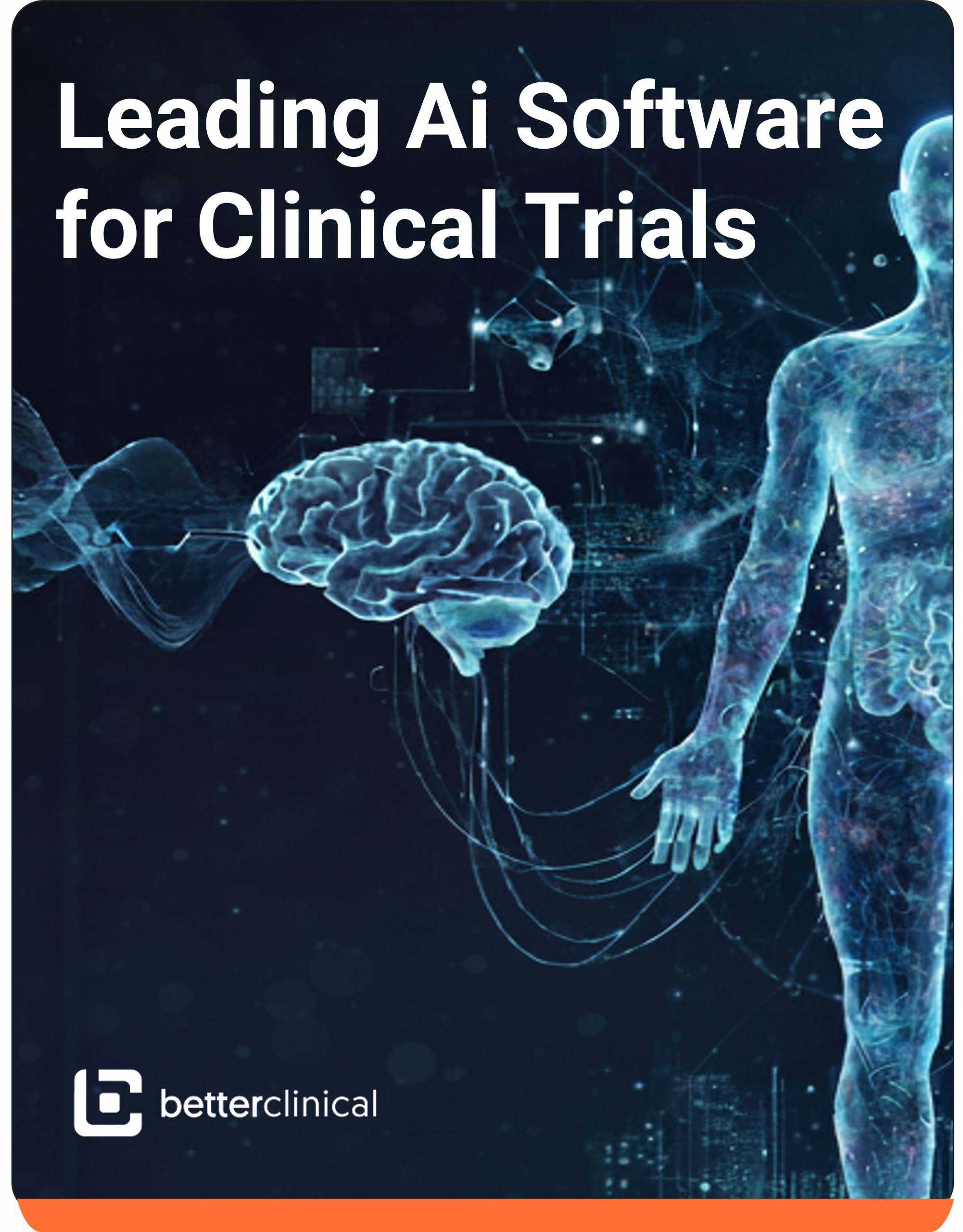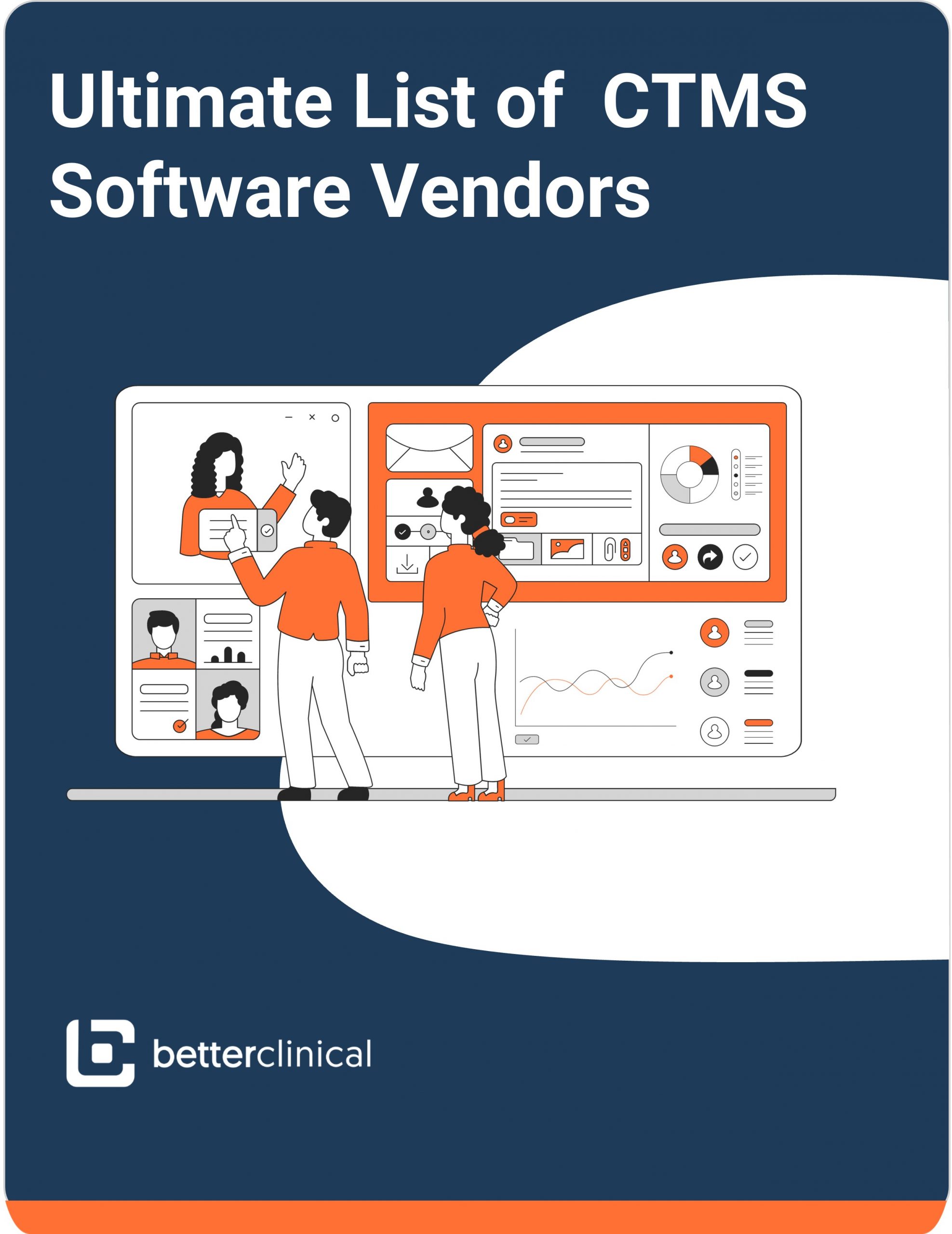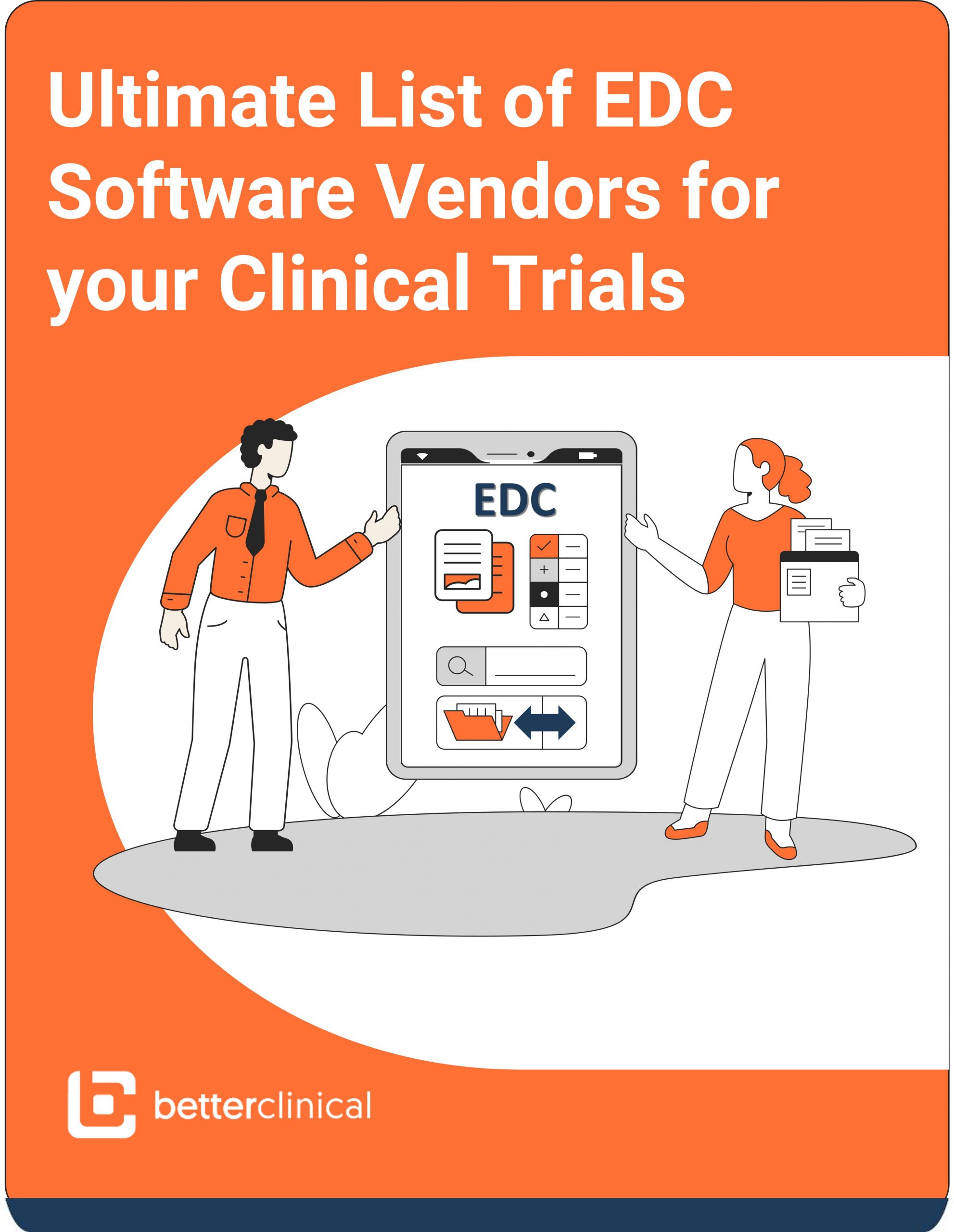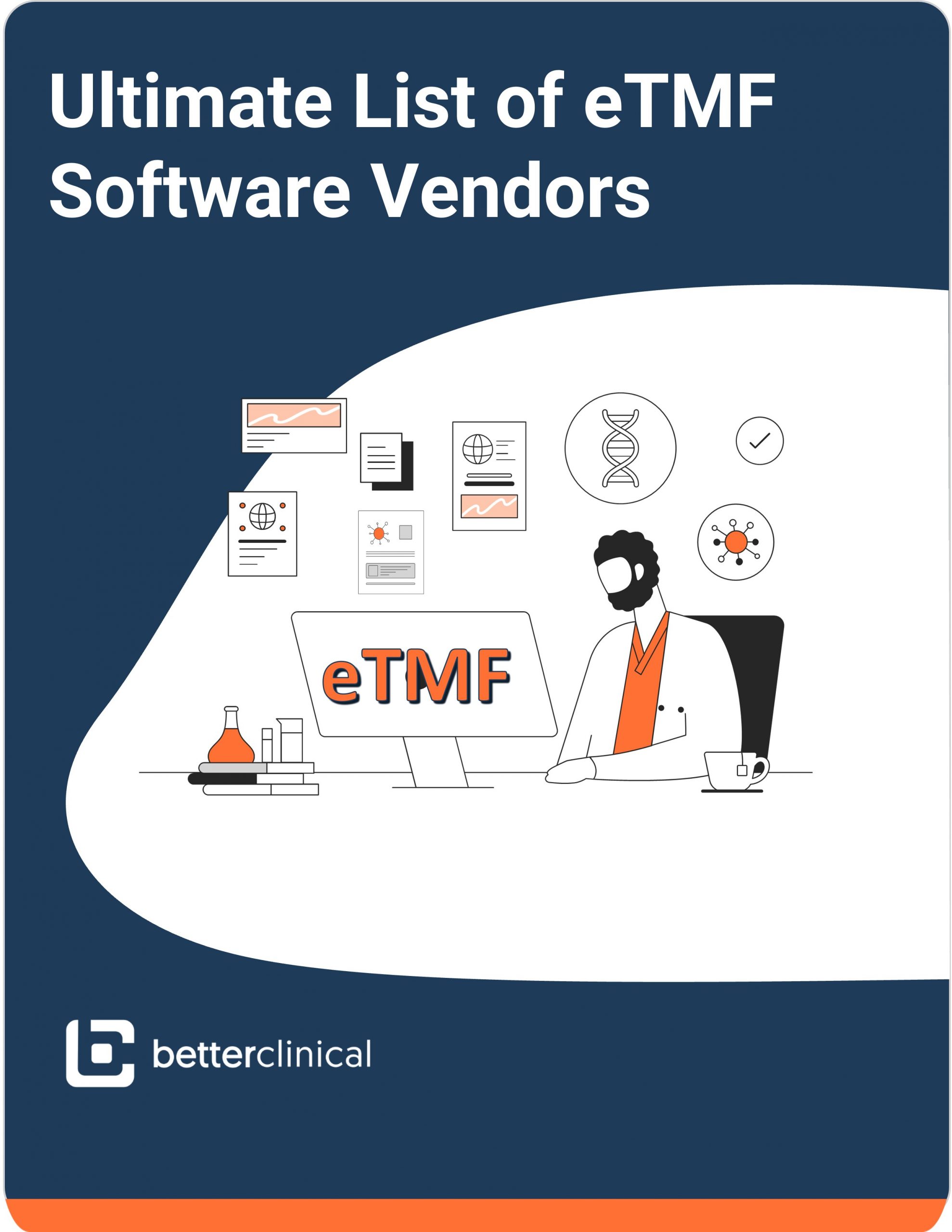Key Takeaways
There are more clinical trial software categories than you realize
TL;DR – Executive Summary
There are more clinical trial software categories than people think. In this guide, we highlight 19 distinct categories of clinical trial software. CTMS, EDC, eTMF, eConsent, Clinical Analytics, Regulatory software, RTSM, eCOA & ePRO, Patient Recruitment software, Ai Software for clinical trials, Pharmacovigilance software, QMS, eISF, DCT, Clinical Trial Design Software, eCRF, RBM, eCTD, and Statistical Analysis software.
Table of Contents
Different Types of Clinical Trial Software
Clinical trial software is the digital backbone of modern research. It includes the digital systems, platforms and tools designed to streamline how clinical studies are planned, conducted, monitored, and reported. These technologies help sponsors, CROs, investigators and regulators manage the enormous complexity of trials by improving data accuracy, automating workflows, and ensuring compliance with global standards.
While most people are familiar with core systems such as Clinical Trial Management Systems (CTMS), Electronic Data Capture (EDC), and Electronic Trial Master File (eTMF) platforms, the reality is far broader.
Clinical trials depend on a diverse ecosystem of specialized software, each addressing a unique operational challenge. From patient engagement and risk-based monitoring to supply chain logistics and statistical analysis, each category plays a critical role in making clinical research more efficient, transparent, and reliable.
In this ultimate guide to clinical trial software, we will highlight 19 distinct categories of clinical trial software, summarizing how each one contributes to the success of a trial and why understanding the full software landscape is essential for sponsors and stakeholders.
Ai Software for Clinical Trials
AI software for clinical trials uses machine learning to improve how trials are planned, managed, and analyzed. These tools help researchers match patients to studies, design better protocols, monitor progress, and check data for accuracy. They can process large sets of data from electronic health records, wearables, and lab systems. This allows teams to spot trends, predict outcomes, and reduce delays in the trial process. These tools are important because they help save time, lower costs, and improve study quality.
AI can find eligible patients faster, flag issues before they cause problems, and give clear insights into trial performance. Most AI software for clinical trials includes features like predictive analytics, patient recruitment support, risk detection, and automated data review. By using AI, research teams can make better decisions and move treatments to market more quickly.
Clinical Trial Management System
Clinical Trial Management System or CTMS is software used to manage clinical trial operations. It is used to centralize trial data, including protocols, patient details, site performance and financial records. It also automates tasks such as scheduling, reporting, document management and provides real-time updates on trial metrics, enabling quick identification of any trial issues.
While a CTMS enhances collaboration between sponsors, research sites and regulators, it also helps researchers monitor trial progress, manage budgets and maintain compliance with regulatory standards, including Good Clinical Practice guidelines. Much like any organization software, the purpose of CTMS software is to help streamline trial operations and improve overall trial efficiency.
EDC Software
EDC software is a web based application used in clinical trials to help collect, manage and store patient data in electronic format. It replaces the previous systems of data collection by means of paper based documents and in this regard it is more efficient and reliable in terms of clinical trial data management. EDC software is used for:
Data collection: Assists researchers to key in data into electronic Case Report Forms (eCRFs) thus enhancing efficiency and decreasing the possibility of errors.
Data validation: It has built in checks for errors and gaps, thus enhancing the quality and completeness of the data.
Real time data access: It enables quick access to trial data this makes it easier to make quick decisions and come up with analyses.
Integration: Some EDC systems can integrate with other clinical trial technologies, which allow for automatic data transfer from different sources.
Data security: It has stronger measures to secure the data collected to ensure that it is not lost, altered or tampered with.
Regulatory and compliance: EDC systems assist in the meet up of the regulatory requirements such as 21 CFR Part 11.
The application of EDC tools in clinical trials may enhance the velocity of the trials, decrease costs, increase the quality of the data and, therefore, the speed of development of new drugs.
Electronic Trial Master File (eTMF) software
Electronic Trial Master File (eTMF) software is a document management system for clinical trials. It provides a centralized, secure repository for all trial-related documents and replaces traditional paper-based methods. eTMF software offer researchers a solution for organizing, storing, and accessing critical trial information. Researchers can also instantly share and review documents, track changes through detailed audit trails, and maintain a standardized document structure. This helps meets stringent Good Clinical Practice (GCP) guidelines.
By automating document workflows, reducing administrative burdens, and minimizing storage costs, eTMF software enables clinical trial teams to focus more on research and less on paperwork.
Regulatory Software for Clinical Trials
Regulatory software for clinical trials helps teams manage the planning, submission, and tracking of documents needed for regulatory approval. It organizes regulatory data, deadlines, and correspondence in one system. This includes trial applications, ethics approvals, amendments, and ongoing reporting requirements.
The software supports collaboration between sponsors, sites, and regulatory teams. It tracks submission status, ensures correct document versions, and maintains full audit trails. Many systems include task reminders, compliance checks, and integration with eCTD and eTMF systems. This helps reduce delays and ensures that all regulatory steps are completed on time.
Randomization and Trial Supply Management (RTSM) software
Randomization and Trial Supply Management (RTSM) software is used to manage patient randomization and drug supply in clinical trials. It helps assign treatments based on study protocols and tracks the inventory of investigational products across sites. The software supports both blinded and unblinded trials and ensures that each patient receives the correct treatment.
RTSM systems connect with other trial platforms to monitor enrollment, shipment, and site stock levels in real time. They also manage re-supply, expiration tracking, and drug accountability. This reduces manual errors and keeps the study running without interruptions. RTSM is used by sponsors, CROs, and clinical sites to improve accuracy and efficiency in trial operations.
eConsent Software
eConsent software is used to manage the informed consent process digitally in clinical trials. It allows participants to read, review, and sign consent forms on a tablet, smartphone, or computer. The software includes videos, quizzes, and other tools to help patients understand the study before agreeing to take part. This improves clarity and helps ensure that consent is truly informed.
Researchers use eConsent to track who has signed, when they signed, and whether they understood the key parts of the study. The system stores all records securely and keeps a clear audit trail. It also reduces paperwork and supports faster startup times. eConsent software is widely used in both site-based and decentralized trials.
Electronic Clinical or Patient Outcome software
eCOA (electronic Clinical Outcome Assessment) and ePRO (electronic Patient-Reported Outcomes) software are digital tools used to collect feedback directly from trial participants. Patients use tablets, smartphones, or web platforms to report symptoms, side effects, and daily health updates. This data helps researchers understand how a treatment affects quality of life, physical function, or emotional well-being.
These tools replace paper forms, reduce errors, and improve data accuracy. They also allow researchers to gather real-time insights from patients without waiting for site visits. eCOA includes ePRO but also covers clinician-reported and observer-reported outcomes. The software ensures that the data meets regulatory standards and is easy to review and analyze.
Clinical Analytics software
Clinical analytics software helps researchers collect, organize, and study data from clinical trials. It gives teams a clear view of how a trial is performing and where changes may be needed. The software connects to data sources like electronic data capture (EDC) systems, lab results, patient records, and site reports. It turns raw data into charts, summaries, and alerts that are easy to understand and act on.
Clinical analytics supports faster decisions by showing patterns in patient responses, site activity, and protocol performance. It helps spot safety issues, slow enrollment, or missed timelines before they become serious problems. The software also helps sponsors and research teams track key trial indicators, stay compliant, and report results more clearly. Many platforms now include dashboards, predictive models, and visual tools to guide day-to-day trial management.
Decentralized Clinical Trials Software
Decentralized clinical trial (DCT) software allows studies to run outside of traditional research sites. It supports remote patient participation through mobile apps, telemedicine, and digital data collection tools. The software helps researchers connect with patients in their homes, making trials more flexible and accessible. It also collects data from devices like wearables, home sensors, and online surveys.
DCT software reduces the need for in-person visits and gives patients more control over their participation. This can lead to faster enrollment, better retention, and higher data quality. It also allows trials to reach more diverse populations across different locations. Sponsors and research teams use DCT platforms to track patient activity, schedule virtual visits, and gather real-time health data.
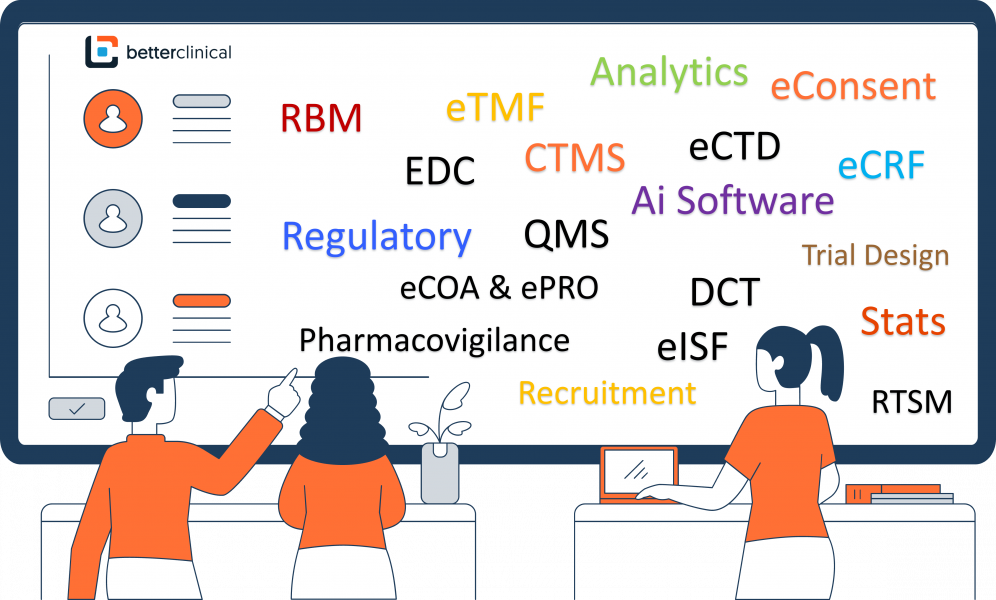
Clinical Trial Patient Recruitment Software
Clinical trial patient recruitment software helps research teams find and enroll eligible participants more efficiently. It uses digital tools to match patient profiles with study requirements based on factors like age, diagnosis, and treatment history. The software often connects to medical records, patient registries, and advertising platforms to reach potential candidates.
Recruitment software tracks each step of the process, from initial outreach to screening and enrollment. It also helps manage communication with patients, send reminders, and collect consent. Some systems include analytics to measure performance and identify where improvements are needed. This reduces delays and helps trials meet enrollment goals on time.
Quality Management System Software for Clinical Trials
Quality Management System (QMS) software for clinical trials helps teams track and control quality-related processes during a study. It supports the management of audits, deviations, corrective actions, training, and document control. The software ensures that trials follow good clinical practice and meet regulatory requirements.
QMS software creates a central platform for logging quality events, assigning tasks, and monitoring timelines. It also stores all quality documents in one secure location with version control and audit trails. By using automated workflows, QMS software reduces manual work and helps research teams respond to quality issues faster.
Pharmacovigilance software for clinical trials
Pharmacovigilance software for clinical trials is used to track and manage safety data related to investigational drugs. It helps research teams collect, review, and report adverse events that occur during a study. The software ensures that safety information is captured accurately and sent to regulators within required timelines.
The system supports case intake, data entry, signal detection, and regulatory reporting. It also includes tools to manage follow-ups, generate narratives, and maintain a clear audit trail. Pharmacovigilance software helps trial sponsors meet safety standards while reducing the risk of delayed reporting or missed events.
Electronic Investigator Site File eISF Software
Electronic Investigator Site File (eISF) software is used by clinical research sites to manage trial documents in a digital format. It replaces paper binders with a secure online system where all essential documents can be stored, accessed, and updated. Research teams use eISF to manage study logs, approvals, training records, and communication with sponsors.
The software keeps all files organized by study and ensures version control across documents. It also helps users meet regulatory requirements by tracking changes and keeping audit trails. eISF platforms often include features like electronic signatures, document checklists, and real-time collaboration. This helps research sites save time, reduce errors, and stay inspection-ready.
Clinical Trial Design Software
Clinical trial design software helps teams plan how a study will run before it begins. It guides decisions on patient groups, treatment schedules, endpoints, and data collection methods. The software uses past trial data, simulation tools, and standard templates to reduce errors and create better trial plans. It helps researchers choose clear objectives and define how success will be measured.
The software also allows users to test different trial designs and compare results. This supports faster approvals and improves the chance of success. Trial design software is used by sponsors, contract research organizations (CROs), and academic groups. It helps align all stakeholders and makes sure the plan meets regulatory requirements.
Electronic Case Report Form eCRF software
Electronic Case Report Form (eCRF) software is used to collect and manage patient data during clinical trials. It replaces paper forms with digital versions that are easier to fill out, review, and store. Clinical sites enter patient data into eCRFs using web-based platforms. The software then organizes and stores this information in a central database.
eCRF software supports clean and consistent data collection. It includes tools for validation, error checks, and data queries. This helps reduce mistakes and makes sure all required fields are completed. Sponsors, monitors, and data managers can view and manage the data in real time. The system also tracks any changes made to records for full transparency.
Risk-Based Management and Monitoring (RBQM) software
Risk-Based Management and Monitoring (RBQM) software is used to identify, assess, and manage risks in clinical trials. It helps teams focus monitoring efforts on the areas with the highest potential impact on patient safety and data quality. The software uses real-time data and predefined rules to flag issues early and guide corrective actions.
RBQM systems support centralized monitoring by collecting and analyzing site performance, data trends, and protocol deviations. The software helps prioritize monitoring visits, manage risk plans, and document actions taken. It reduces the need for routine site visits and supports a more targeted, efficient approach to trial oversight.
Electronic Common Technical Document eCTD
Electronic Common Technical Document (eCTD) software is used to prepare and submit regulatory documents to health authorities. It organizes clinical, non-clinical, and quality data into a standard format required by agencies like the FDA and Health Canada. The software helps teams build, edit, validate, and publish submissions quickly and accurately.
eCTD software creates structured documents using predefined modules and folders. It checks each submission for errors and ensures that all required sections are included. The system also tracks versions and maintains a complete record of all changes. Regulatory teams use eCTD platforms to manage large volumes of documents across multiple submissions and regions.
Statistical Analysis Software For Clinical Trials
Statistical analysis software for clinical trials is used to evaluate study data and support evidence-based conclusions. It helps statisticians run tests, model results, and generate reports that show how treatments perform. The software processes patient data to compare groups, measure outcomes, and check for statistical significance. These tools follow clinical trial protocols and regulatory guidelines to ensure valid results. They support tasks such as sample size calculation, survival analysis, and interim reviews.
Many platforms also include features for generating tables, listings, and figures (TLFs) used in regulatory submissions. Statistical software is used by sponsors, CROs, and academic researchers throughout the trial lifecycle.
Summary
Clinical trials are too complex to only be supported by a handful of tools. Progress in medical innovation depends on a wide range of technologies, each solving different problems that together ensure trials run smoothly, data remains trustworthy and timelines stay on track. The software represented within the above 19 categories of clinical trial software help drive efficiency and compliance across the entire lifecycle of research.
To discover more details on the software and vendors shaping the future of clinical development, visit the largest directory of clinical trial software available today.

